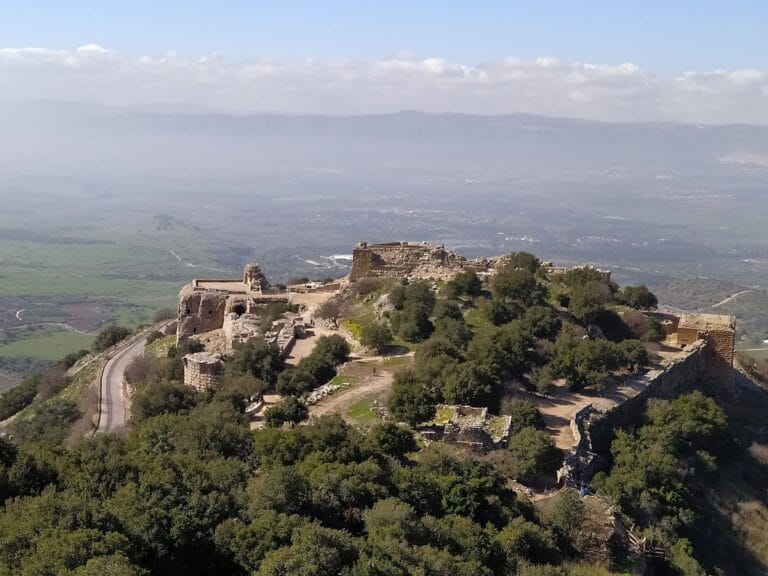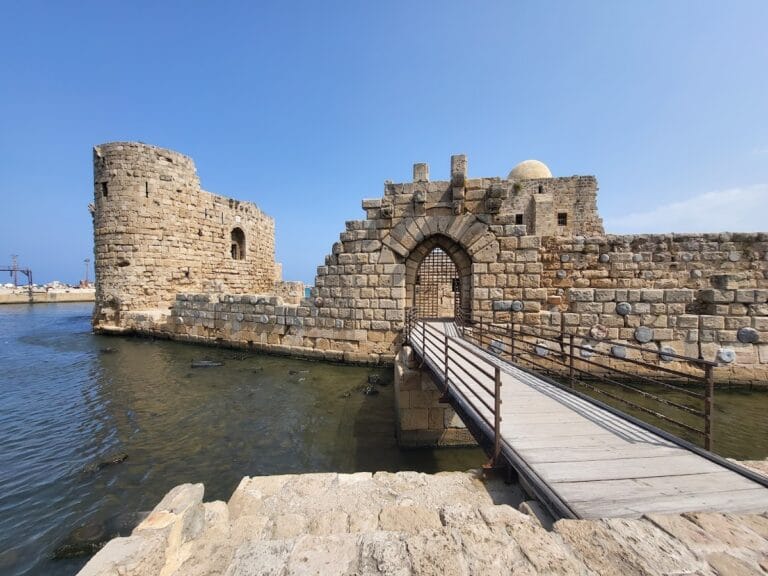Beaufort Castle: A Crusader Fortress in Lebanon
Visitor Information
Google Rating: 4.6
Popularity: Low
Google Maps: View on Google Maps
Country: Lebanon
Civilization: Crusader, Medieval Islamic, Ottoman
Remains: Military
History
Beaufort Castle, also called Qala’at ash-Shqif or Shaqif Arnoun, stands near Arnoun village in Lebanon. This fortress was originally constructed by the Crusaders on a high rocky cliff overlooking the Litani River, a location chosen for its commanding strategic vantage.
Before the Crusaders acquired the site, it was fortified by Arab forces. Its formal transfer into Crusader hands occurred in 1139 when Shihab al-Din Sohrawardi, the atabeg of Damascus, ceded the fortress. Subsequently, King Fulk of Jerusalem granted Beaufort Castle to the lords of Sidon, establishing it as an important defensive and administrative center in the region.
During the late 12th century, the castle proved its military value. It served as a sanctuary following the 1179 Battle of Marj Ayoun and endured a lengthy siege by Saladin’s forces after their victory at the Battle of Hattin in 1187. The defenders held out until 1190, surrendering under terms that secured the release of Reynald of Sidon, a key Crusader noble.
In 1240, Beaufort was returned to Crusader control under a treaty with Al-Salih Isma’il, the malik of Damascus, indicating its continued importance in the ongoing power struggles. By 1260, Julian of Sidon sold the castle to the Knights Templar, a military order tasked with defending Crusader territories. However, this possession was short-lived; in 1268, Mamluk Sultan Baibars captured Beaufort after a ten-day siege, utilizing twenty-six siege engines to overcome its defenses.
The following centuries brought a relative period of calm. Between the 14th and 16th centuries, Beaufort remained a stable fortification. In the 17th century, it was integrated into the defensive network of Fakhr-al-Din II, a prominent Druze leader who reinforced several key strongholds. After his defeat, the Ottomans partially dismantled the castle’s fortifications, yet the site remained under feudal control until 1769.
In 1782, the governor of Acre laid siege to Beaufort Castle, seizing it and further damaging its walls. The fortress suffered additional harm from a severe earthquake in 1837, after which its stones were repurposed locally and the interior used as shelter for livestock.
Interest in Beaufort’s archaeological and historical value began to grow in the late 19th century. The French scholar Victor Guérin surveyed the site in 1880, followed by a detailed examination during the Survey of Western Palestine in 1881. Restoration efforts were initiated by the French Mandate authorities in 1920 and continued after Lebanon’s independence.
The castle became a military base during the late 20th century conflicts. From 1976 to 1982, the Palestine Liberation Organization occupied Beaufort, using it as a point from which to carry out attacks into northern Israel. During the 1982 Lebanon War, Israeli forces bombarded and captured the site. The Israeli Defense Forces then fortified the castle with modern military structures such as bunkers and observation posts, maintaining control until their withdrawal in 2000. Afterward, military installations were removed to prevent use by opposing armed groups.
Since 2000, the Lebanese government has led rehabilitation projects to conserve Beaufort Castle as a national heritage site. While the castle remains a powerful symbol with differing meanings for Lebanese, Palestinians, and Israelis, in 2024 UNESCO granted it enhanced protection to safeguard its preservation amid ongoing regional conflicts.
Remains
Beaufort Castle is perched atop a cliff rising roughly 300 meters above the surrounding landscape, overlooking the Litani River. The fortress displays a roughly triangular shape, stretching about 150 meters in length and 100 meters in width. Its construction takes full advantage of the natural rock formation, integrating steep slopes as part of its defensive system.
The castle consists of two primary sections arranged along a north-south axis. At the western end sits the upper castle, which commands the entire site, while the eastern lower castle lies beneath it. The base of the triangular site measures approximately 90 meters across, and the rock spur elevates the fortress about 170 meters above the surrounding terrain.
Access into the complex is through the main entrance found on the southern side, situated between the upper and lower castles. This gateway, known as “Gate A” in later restoration records, lies near towers numbered 5 on the upper castle and 1 on the lower castle.
Within the upper castle, the southern portion is fortified by an inner shield wall, guarded by two towers (towers 5 and 6). A central keep, accessible via a gently sloping ramp, stands as the stronghold’s heart. Adjacent to the keep lies a chapel, indicating the importance of religious practice within the fortress. At the southern extremity of this section, a distinctive hexagonal tower offers additional defense.
The lower castle features a large vaulted hall in its southern area, a significant interior space likely used for gatherings or storage. This hall is protected by towers 1 and 2 to the south. Moving northward along the perimeter, there are towers 3 and 4, with the latter preceded by a salient—a projecting part of the wall designed to enhance defense. Casemates, or vaulted chambers, and a building referred to as Building H are also present at the southern end, suggesting a complex functional layout.
Water management was carefully planned, as seen in the presence of cisterns for storing rainwater and drainage systems to channel wastewater outside the fortress. These features imply that provisions were made for sustaining a garrison during sieges.
Archaeological traces include evidence of a basin to the north of the site, further hinting at water-related activities or storage. Beaufort’s elevated position allowed clear views of several other fortresses in the region, including Subeibeh on the Golan Heights, as well as Toron, Maron, Sidon, Tyre, and Chamaa, highlighting its role in a network of Crusader defensive sites.
During the Israeli occupation in the late 20th century, modern military structures were added adjacent to the medieval castle. These include bunkers, concrete blocks, tunnels, and observation posts, all designed to serve contemporary defense needs. These additions were separate from the original masonry, and security concerns restricted soldiers from accessing lower castle areas.
Restoration work beginning in the 20th century and continuing into the 21st has focused on stabilizing the castle’s structure, clearing debris, protecting the masonry from rainwater damage, and reconstructing critical features such as the main tower and the gatehouse area. Modern lighting systems have also been installed to secure the site.
Though parts of the castle have been damaged or altered over time, the remaining structures provide a clear picture of defended medieval architecture adapted to the natural landscape, incorporating both military and religious building elements consistent with Crusader fortifications.







